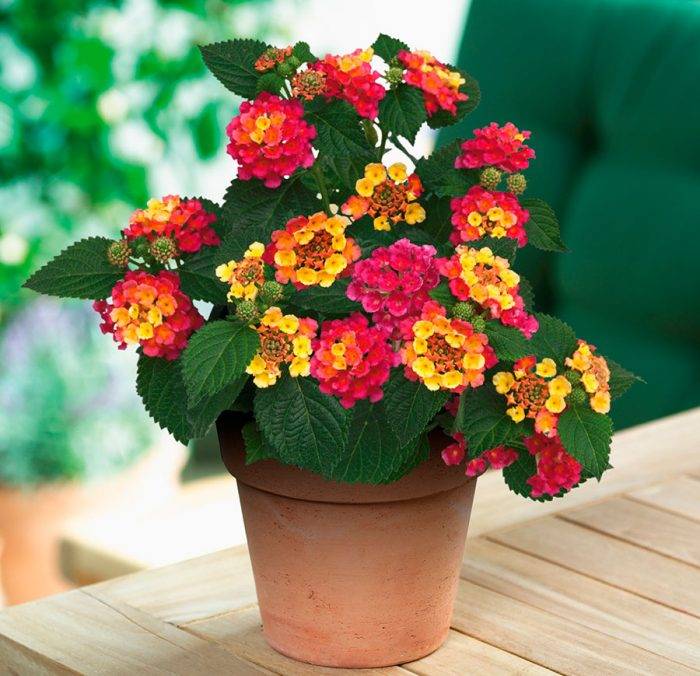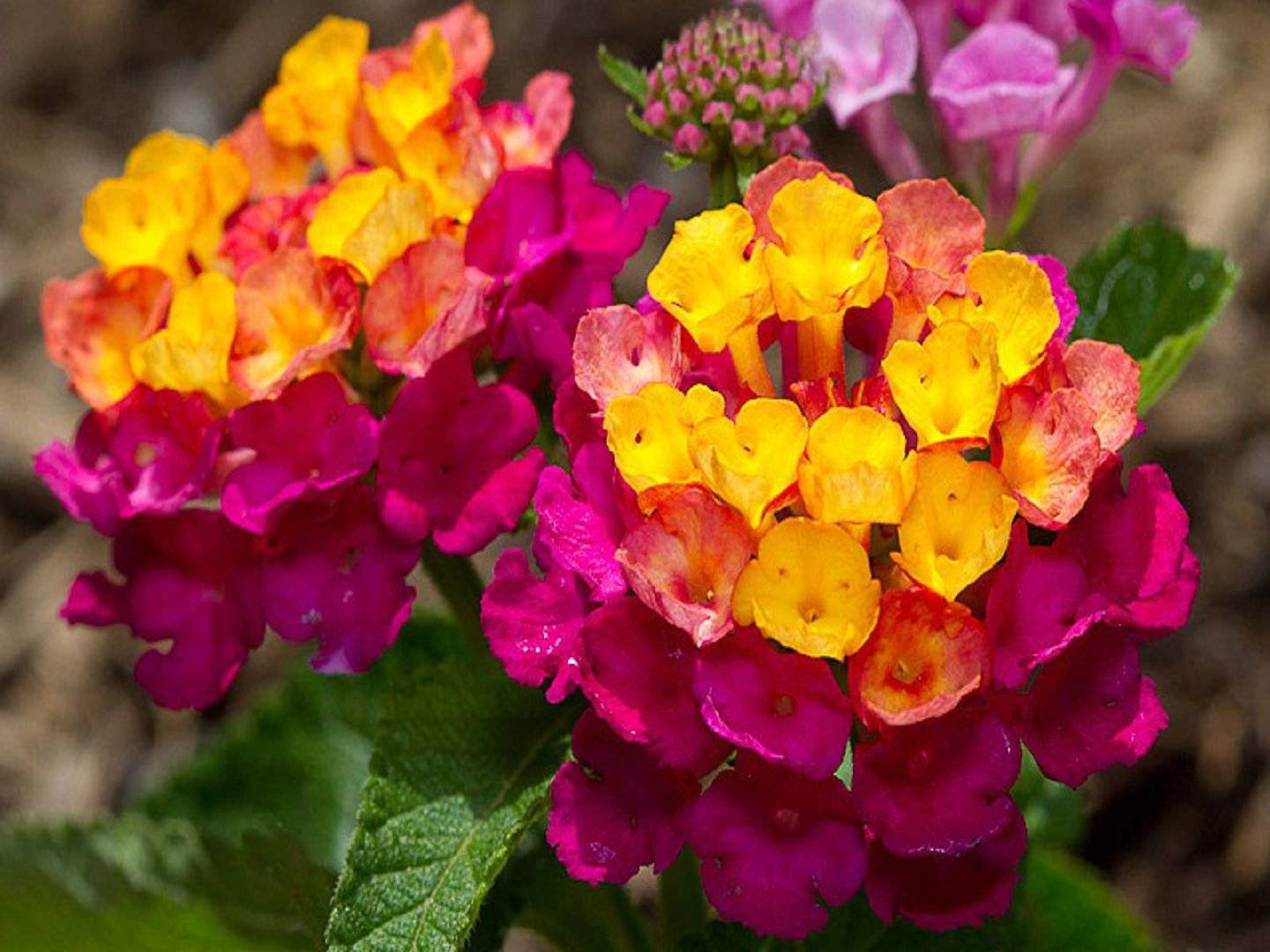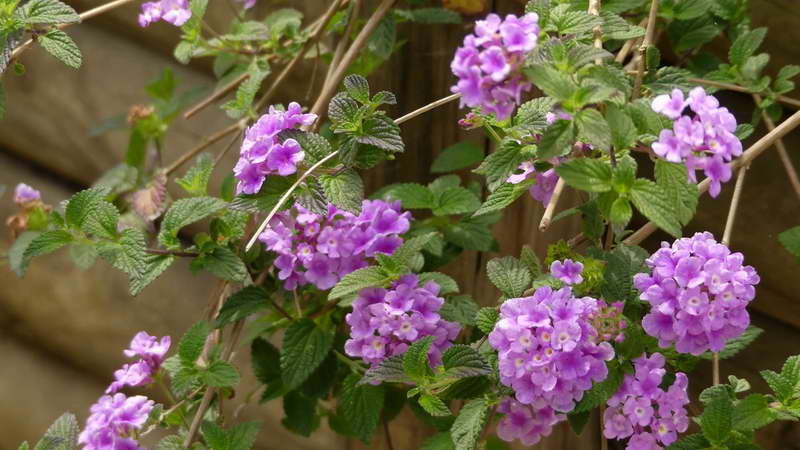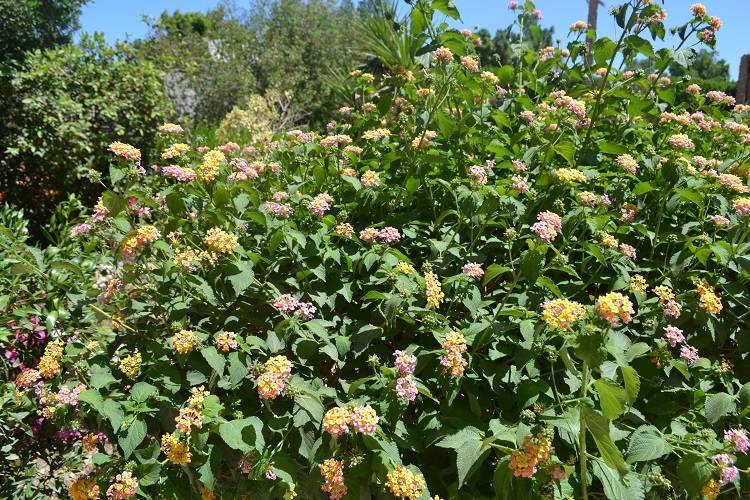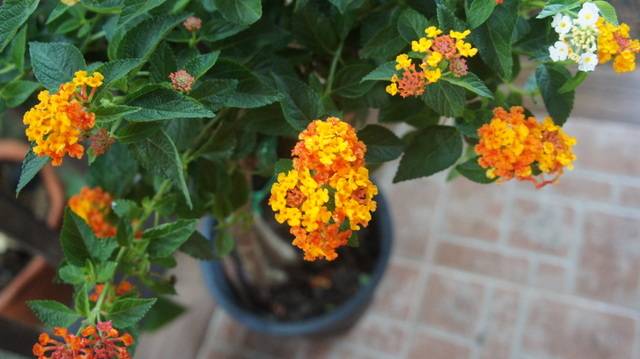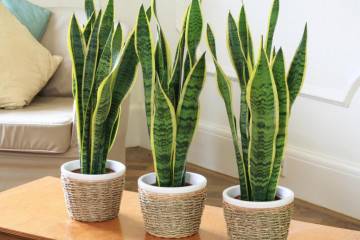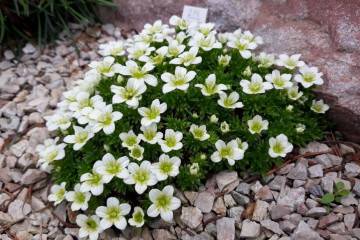Lantana flower - planting and reproduction
Content:
Lantana is a plant that is growing in popularity every day. Both beginners and experienced growers grow it outdoors, in tubs and pots. Due to its compact size, rich palette of colors and unpretentious care, lantana is rightfully included in the top 10 of the best tub flowers.
Description of the plant
Lantana is a perennial plant belonging to the Verbenaceae family. In nature, it grows in Mexico, India, Central Asia and Colombia. Lantana has the appearance of a spreading shrub with branched shoots. Some of its varieties can grow up to 3 m in height.
The mature shoots of the bush are covered with bark. Some varieties have thorns. The leaves are attached with petioles, can be arranged in a spiral or opposite each other. They grow ovoid with slight pubescence and small teeth. Their average length is 5-7 cm. The leaf plate can be painted in a rich green color, when some varieties are characterized by the presence of light green stripes.
Flowering usually begins in May and lasts until mid-September. Spherical inflorescences grow from the axils of the leaves, to which they are attached with a long peduncle. Despite the small size of the flowers, they have a pleasant intense scent.
Indoor varieties of lantana
In natural growing conditions, there are more than 150 species of this plant. Only two are used as room culture.
Lantana camara
This lantana is a plant with climbing stems, on which small thorns grow. The leaves are oval or heart-shaped, painted in gray-green shades. The outer side of the leaf plate has a smooth surface, and the inner side is slightly pubescent.
This species blooms with bright panicle-shaped inflorescences. With proper care, the first flowers can appear as early as May. The buds bloom pink or yellow, but eventually change their color to orange or red.
The following varieties are especially popular in home cultivation:
- Golden cloud. The flowers are colored deep yellow;
- Naida. The variety is characterized by white flowers with a bright yellow core;
- Pink queen or pink lantana. In early summer, the flowers take on a salmon yellow hue, which eventually takes on a bright pink color;
- Cocktail. Lantana flowers are predominantly terracotta shades.
Lantana Montevideo
Montevideo lantana is not as popular as camara, but it is still interesting for modern flower growers. It is characterized by creeping shoots, on which saturated green leaves are densely located. They are compact and egg-shaped.
Small inflorescences include flowers of pink and lilac shades.The flowering period begins in early summer and lasts until mid-autumn.
Growing lantana at home and outdoors
Lantana vaulted and its other varieties used for decorative purposes can be grown both in a pot or tub, and in the open field.
At home
To grow lantana as a room culture, you need a substrate prepared in equal quantities from humus, river sand and sod land. The best place for a pot would be a windowsill on the southeast or southwest side.
In winter, it is better to move the pot to a well-lit place with a temperature of at least 12 ° C. In this case, watering should be minimized. The soil should be moistened after the upper part of the soil has dried. If lantana has dropped its leaves, the container with it is transferred to a cooler room with a temperature of about 7 ° C.
As a tub culture
If white lantana and its other varieties are grown as a tub culture, care for them is no different. The only difference is that with the onset of spring, when the threat of night frosts has passed, the culture is gradually getting ready for the street. For this, the flower pot is brought out into the fresh air for a short period of time, increasing the residence time every day. A hardened plant is exposed to the street or an open balcony until autumn.
Care consists in regular watering, feeding and pruning the plant. In the fall, before the onset of frost, the shrub is cut off and moved to a cool room. When winter comes, lantana can be kept in a cool greenhouse or on a loggia.
In the open field
Growing lantana prickly, pink and other varieties in open ground is possible only on the territory of the Black Sea coast. Leaving involves the same activities, but with some distinctive features.
How to care for lantana at home
For a lanthanum plant, home care involves a number of simple procedures that even a novice florist can do.
Illumination and temperature conditions
In the summer months, the flower pot can be taken out to an open balcony or loggia. It will grow well in the fresh air. The plant needs bright lighting with light shading. As for the temperature, 17-24 ° C is enough for lanthanum in summer, and from 6 ° C to 15 ° C in winter.
Watering rules and humidity
In hot weather, water the flower regularly and abundantly. The top layer of soil in the pot should always be moist. It should not be allowed to dry out, otherwise the lantana flower will drop. Starting in autumn, the frequency of watering is gradually reduced.
The plant feels comfortable in the air with high humidity. To provide him with such conditions, the greenery and air around the flower are sprayed with settled water from a spray bottle. Also, a container with a flower can be placed on wet stones.
Top dressing and soil quality
Caring for lantana involves regular feeding. It is recommended to use a ready-made mineral complex intended for flowering plants as a fertilizer.
The soil for planting must have high levels of water and air permeability. You can prepare it yourself from the following components:
- garden land;
- leafy land;
- river sand;
- peat.
Flower container size
Since the plant is photophilous and most of the time it grows in the sun, the pot should be chosen in light shades so as not to overheat the root system.Despite the well-developed root system, the plant does not need too much capacity. Active root growth will inhibit the flowering process.
Pruning and replanting
The transplant procedure is carried out no more than once a year. The best time for her is the second half of winter. Also during this period it will be useful to prune the shrub by removing old and damaged shoots.
Caring for a flower on the street
If lantana is grown in the garden, you need to care for it differently. First of all, the following agrotechnical measures must be observed:
- surface digging of soil in early spring;
- organization of drip irrigation;
- mulching bushes with an organic substrate;
- regular fertilization;
- pruning long branches during the entire growing season;
- pruning at the root of the plant before the onset of frost;
- organization of a shelter from a thick layer of mulch.
Features of flowering plants
The flowering period of lantana begins in May and can continue until early autumn. The inflorescences are spherical and can be yellow, white and other colors depending on the variety.
Flower reproduction methods
Reproduction of lantana is possible in two ways: by seeds and cuttings.
Seed propagation
Planting material can be purchased at specialized stores. It is better to sow it in early February in pre-prepared loose soil. After the sprouts appear, the seedlings are transferred to a cool place. This is followed by its picking and subsequent landing at a permanent place of growth.
Propagation by cuttings
To obtain cuttings, about 10 cm of the shoot is cut off. The cut is processed with a growth stimulator, after which it is planted in a mixture of peat and sand. Rapid rooting of the cutting is possible in a cool place, so the plant is transferred to a room with a temperature of 16-18 ° C.
Diseases and pests
If you follow the care recommendations, there are no problems when growing lantana. If the plant is regularly flooded, it will become susceptible to fungal diseases. To prevent this, it is recommended to periodically loosen the topsoil.
The popularity of lanthanum is also due to its medicinal properties. In Spain, it was used to get rid of wounds, cuts and dermatitis. A decoction of its leaves and flowers was widely used for ARVI, rheumatism and gastritis. For what purposes to grow lantana - everyone decides independently. But one thing is invariable, this plant deserves special attention.
